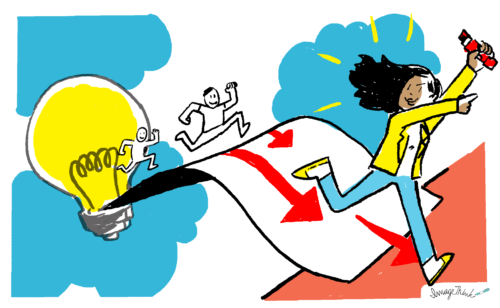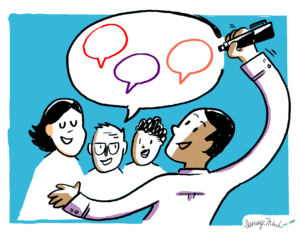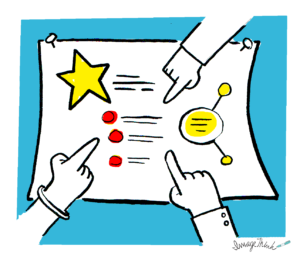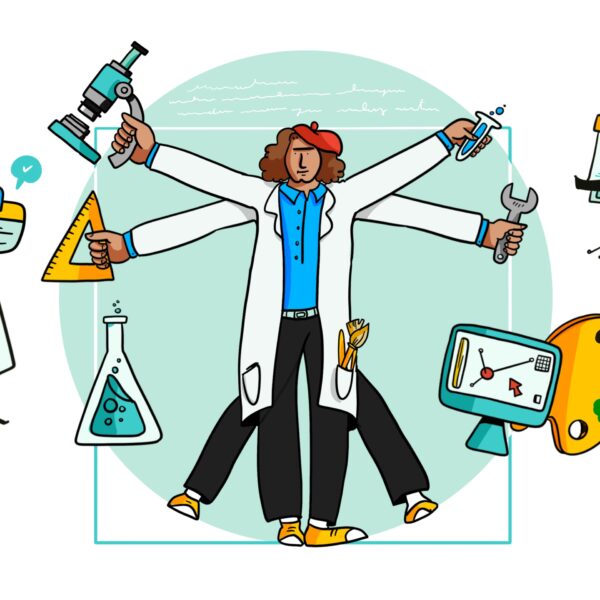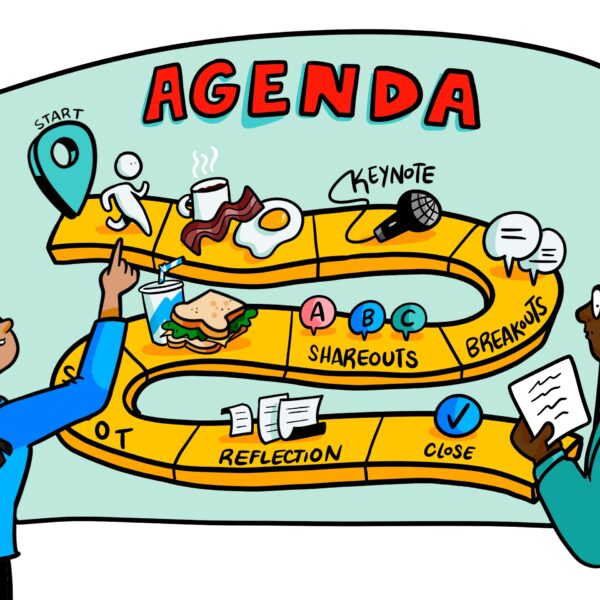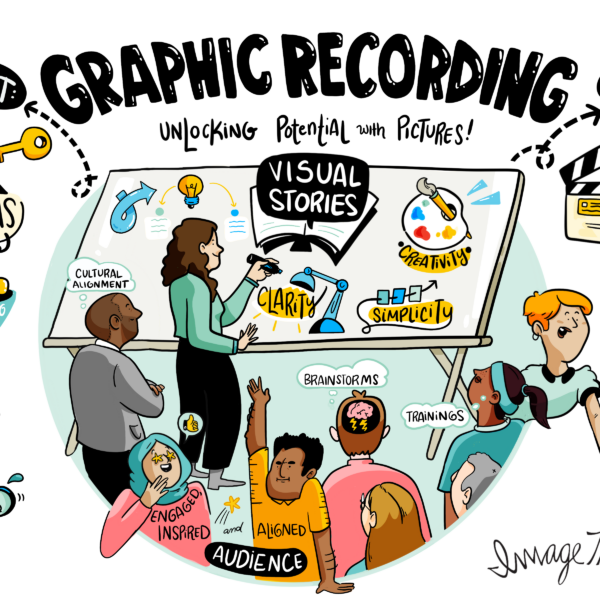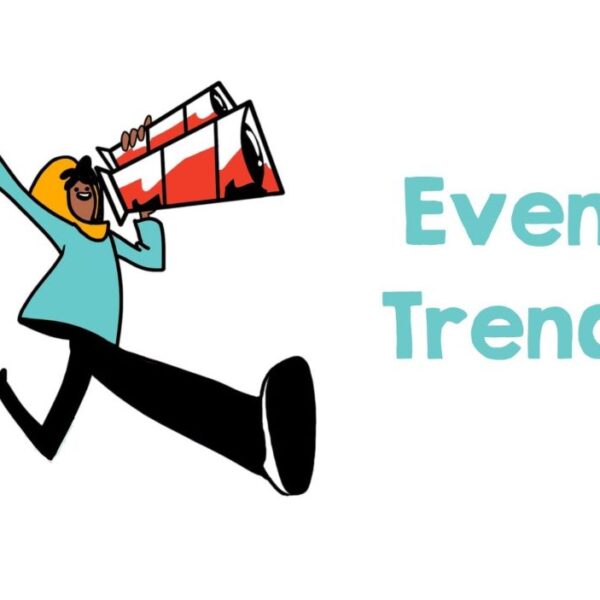The GISC Visual Leadership workshop only has two spots left! Held August 11-13 in beautiful Cape Cod, the visual leadership workshop will give participants the visual skill sets to become stronger leaders.
The first workshop since the release of Draw Your Big Idea, the GISC Visual Leadership event is an incredibly special opportunity to gain graphic recording insights and strategic tools from ImageThink cofounder and Draw Your Big Idea coauthor Nora Herting.
To get ready for the event, Nora answered some frequently asked questions about why visuals can be such a powerful leadership tool.
1) What are the key learnings you want attendees to take away from their time with you at the Visual Leadership workshop?
Tools to augment their work as leaders.
It is not about making pretty pictures, but about effectively and quickly communicating that visuals can be the bridge from ideation to execution
2) Why does a visual thinking toolset make someone a stronger leader? What does it help them do with their team?
When you are at the front of the room, holding a marker, you hold the power. Not only are you the one active person in the discussion, you are actively deciding what is memorialized in words in pictures. This is a powerful way to shape a conversation.
Managing teams requires having a vision and helping others all see that shared vision. An understanding about how to create a visual metaphor that inspires and serves as a framework for your team to collectively build is a powerful way to lead and to get results.
Visual diagrams can be applied to help give structure to complex strategies and initiatives. There are so many benefits to mapping projects visually. Doing so uncovers and illustrates different touchpoints and work streams. Big visuals in the workspace also serve as a physical reminder of what is in play and where a project stands. When it is large, versus a document on a someone’s laptop, it is more egalitarian. The sheer scale invites more than one person to review, discuss and interact with it.
3) What are some major stumbling blocks to being a good leader, and how can a visual thinking toolset help overcome them?
Encouraging more reticent team members to contribute can be a challenge. Often the loudest person’s idea sets the tone or the direction. Recording what someone says gives it weight. If the person keeps contributing, attention can be drawn to the fact that their idea is already documented for everyone to see. Quieter members can then be encouraged to speak up. The end result is a visual that reflects a more balanced perspective.
4) Can you talk about a time that graphic facilitation really helped pull together a team?
We worked with an organization that had gone through a merger. This division was struggling with new processes and the quality of their work. Using the visual metaphor of a high bar jumper everyone was asked to write down responsibilities and then rank them on a visual of a high bar from low to high performance. What would normally be a very difficult and lengthy discussion, became a quick visual exercise. The group could step back and see where their collective work fell on the scale. Then they worked to identify ways they could “raise the bar”.
Only two spots are left for GISC Visual Leadership–reserve yours here!
